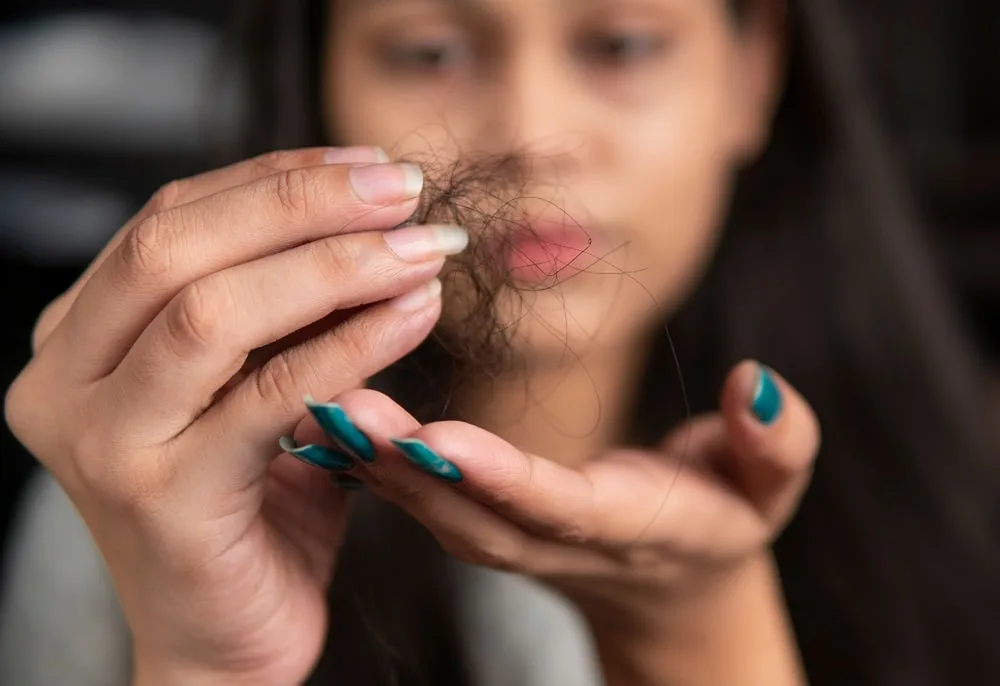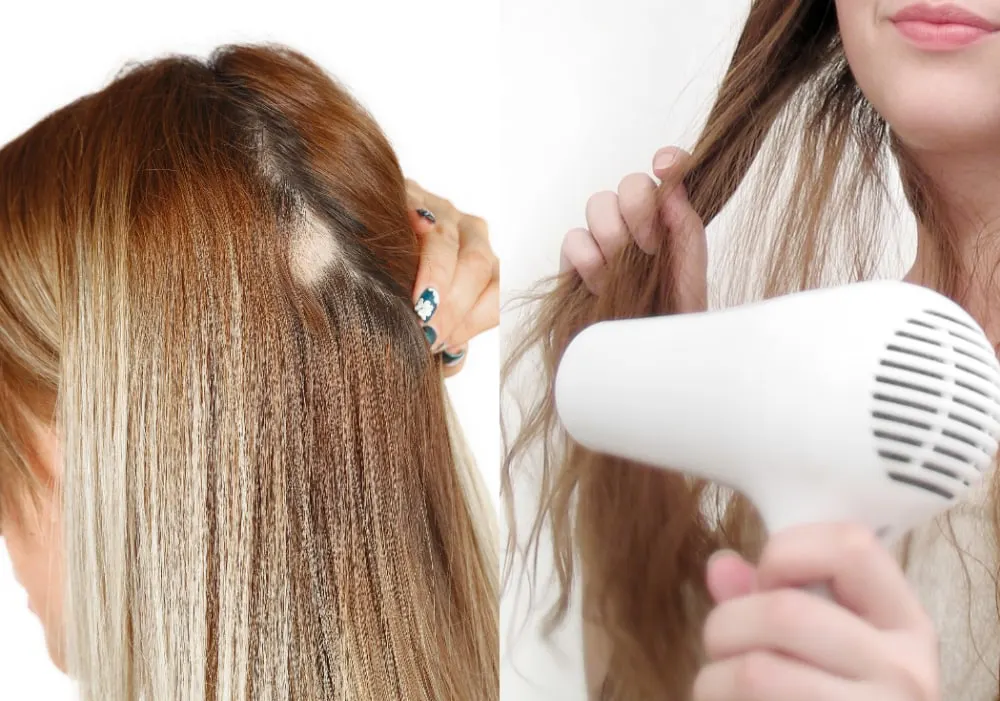Seeing large clumps of hair on your brush or pillow, in your shower drain, or in your hand can be alarming. This concern likely motivated you to research what 100 strands of hair looks like.
Hair fall isn’t uncommon, as you’ll quickly discover. This article will explore why this phenomenon happens and dive deep into how much daily hair loss is normal and acceptable.
We’ll provide tips for determining how many strands you may lose at any given time. And we’ll help you understand when you should be worried about losing hair and what you should do if this is happening.
How Much Hair Fall a Day Is Normal for an Adult?

Data published by the American Academy of Dermatologists highlights that individuals, on average, lose between 50 to 100 strands of hair daily.
Gender, general health, and environmental factors can greatly impact hair loss. For example, a study published by the National Institutes of Health (NIH) shows that women have a higher incidence of hair loss than men.
Study authors attribute the increased hair fall rate among females to pregnancies, menopause, and other conditions that can cause an imbalance in their hormone levels.
The study also outlined how at least 40% of women’s hair styling choices also contributed to accelerated daily hair loss over what might have otherwise occurred naturally.
What Do 100 Strands of Hair Look Like?

A comparison collage showing 10, 50, 100, 200, 400, and 750 strands of hair | copyright: semanticscholar.org
How 100 strands of hair look will vary depending on several factors, including:
- Length
- Color
- Type
- Texture
For example, the amount of hair loss may not be as evident in curly hair due to its tendency to curl up after falling. In comparison, between straight or wavy hair, the fall amount may be far more noticeable and thus easier to estimate.
You may be surprised to find that a clump of 100 hairs looks like a lot less. In general, a clump of 100 long, straight hairs may be easy to see through and when clumped into a pile, is only a fraction of the size of your palm.
Whereas a pile of 100 tight curly hairs, might take on the appearance of two or three smaller hairballs. Where the hair fall occurs will also matter in what 100 strands of hair look like.
For example, dry hair that accumulates during a brushing session may add to hair fall accumulated during previous comb-throughs, making the amount seem more significant than it really was.
Additionally, hair fall that occurs when you’re in the shower may absorb water and hair products in addition to becoming bunched up, causing it to take on a pillowy appearance.
These details may make hair loss seem more abundant than it really is. Individuals who fail to brush or detangle their hair daily are the ones most likely to lose 100 strands of hair when they wash it.
This outcome is likely because these hairs didn’t have an opportunity to fall out during previous hair care sessions, so they tend to all fall out at once.
How To Tell if You’re Losing Too Much Hair?
Any hair loss that exceeds 100 stands daily warrants further investigation. It may indicate that the pores on your scalp are too clogged.
Since few people treat their scalp like they should and exfoliate, cleanse, and moisturize it, buildup tends to accumulate from the products they use, causing flaking and hair loss.
Additional causes of hair loss or scalp health issues include:
- Damaged hair follicles
- Excessive hair brushing
- Heat-treating hair too often
- Excessive hair washing
- Overtreating or overbleaching hair cosmetically or chemically
- Hard/extremely salty water
- Ill effects of few hair care product ingredients

Additionally, medical concerns such as the following can give way to significant hair fall issues:
- Nutritional deficiencies
- Thyroid issues
- Alopecia
- Stress
- Lupus
- Recent heavy blood loss
If you’re having difficulty determining how significant your daily hair loss is and whether it warrants further investigation, you may find it worthwhile to perform a ‘pull test’.
To do this test, you’ll want to ensure your hair is clean and dry. You should grab a section of your hair by the ends and gently tug on them.
The goal is to have no more than 10% of the strands you pull on in your hand after tugging on them.
While you’ll never know the exact number of strands of hair you grabbed, it makes it much easier to ballpark how many you did and gauge whether it’s less than 10% of the initial amount or far more than that.
If there are more strands of hair than that in hand, you may want to consult with a physician to see if there’s an underlying medical issue.
Getting to the Bottom of Your Hair Woes
Virtually everyone with hair experiences at least some degree of daily hair loss. Determining what 100 strands of hair look like, how your daily loss compares, and when your hair fall is too much may take some trial and error.
However, this insight can be helpful as you decide whether you indeed have a problem on your hands and, if so, how to best address it.
